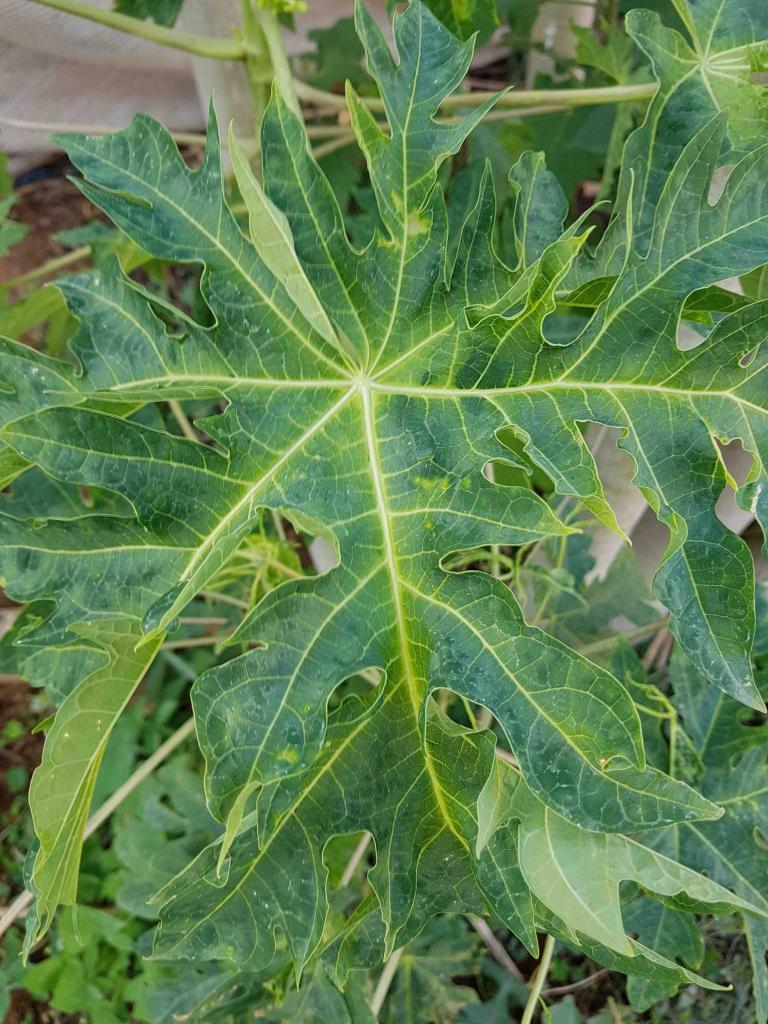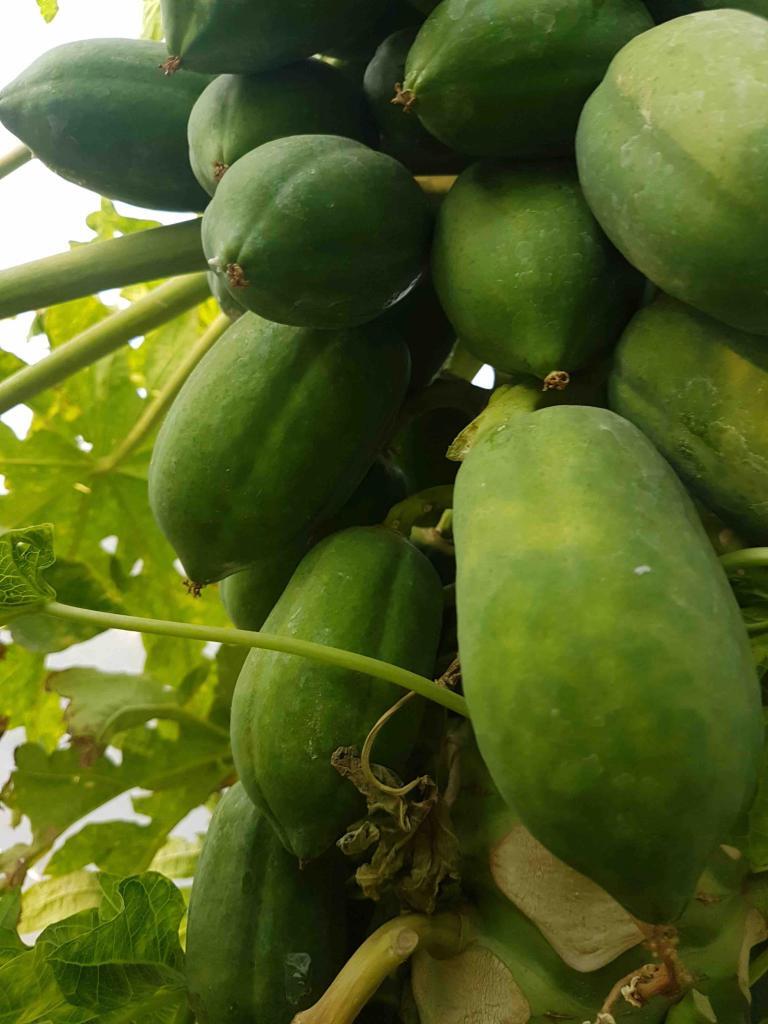Papaya Ringspot Virus
Papaya and cucurbits
Papaya ringspot is a viral disease in the genus Potyvirus. PRSV is transmitted by aphids. The virus is acquired and transmitted in a non-persistent manner by its vector in short periods of time that are measured in seconds to a minute.
The leaves develop a mosaic pattern and chlorosis that become malformed and can exhibit irregular, dark green blisters. Water-soaked, oily streaks appear on the petioles and upper part of the trunk. The symptoms include distorted and knobby fruits that can show color breaks. The fruit from infected trees will often develop ring spots, which is the reason behind the name of this disease. Severe symptoms often include a distortion of young leaves. Trees that have been infected at a young stage remain stunted and cease to produce economical yields.
There are no treatments for viruses. Since Papaya ringspot virus may have spread before the symptoms appeared, the focus should be on prevention such as using resistant crop varieties and eliminating weeds and aphids.
It’s easier and more cost effective to overcome infestation by eliminating aphids during the initial stage of infestation. Make it a routine to monitor fields regularly and search plants for the presence of aphids on a weekly basis
Sanitation: Keep the crops’ close surroundings and environmental conditions neat by removing weeds and closeby plants that are non-cultivated and unprotected, which can attract aphids.
Growing inside structures: The most effective way to protect your crop from aphids is simply (but costly) growing them inside a greenhouse or a dense (50 mesh) net structure.
The following is an insecticides used in one or more parts of the world: imidacloprid-based product (1 iteration via irrigation or spray can). In most cases, make sure to completely eradicate an aphid infestation, though this method may not keep crops completely safe from acquiring the disease. Two to three additional spray applications may help to reduce the chances of infection.
Other insecticides (molecules\active ingredient names) include: flonicamid, imidacloprid, pymetrozine, thiamethoxam, sulfoxaflor, acetamiprid, chlorpyrifos, cypermethrin, and bifenthrin.
Important note:
The use of insecticides to control the spread of Papaya ringspot virus has its limitations since the virus is transmitted in a non-persistent manner; aphids may have already transmitted the virus before the insecticide killed them.
Spray-able products containing one or more of the following molecules: azadirachtin, neem oil, pyrethrins, and potassium salt of fatty acids.
*Names marked in red are considered to be highly poisonous to beneficial insects.
*Names marked in green are considered to be organic and IPM (integrated pest management) compatible.
Image Gallery

